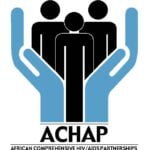
ACHAP
In Phase I, from 2002 – 2009, with support from ACHAP and other development partners, the Government of Botswana has established one of Africa’s largest public sector HIV and AIDS treatment programmes. ACHAP support has included infrastructure development with the construction of 35 Infectious Disease Care Clinics (IDCC), training of about 7000 health workers and lay personnel and provision of equipment to support laboratory diagnostic and monitoring services.
This support enabled the rapid expansion of clinical services, putting almost 113,948 people including 7,142 children on treatment with public sector resources by the end of April 2009, and a total of 126,797 patients on treatment in the public and private sectors.
During the same period, Botswana has been able to rapidly expand access to HIV testing and counselling services. ACHAP’s funding supported the procurement of rapid test kits, infrastructure development, and provision of skilled human resources enabling (with the support of other partners) an estimated 56.4% of the population to have tested at least once for HIV and an estimated 41.2% to have tested in the past 12 months (BAIS III).
In August 2010, ACHAP launched its second phase of programme implementation marking a five years of support to Botswana’s HIV/AIDS response, through the combined commitment from the Bill and Melinda Gates Foundation and The MSD/Merck Company Foundation. The ACHAP Phase II programme implementation has clearly defined objectives, which are aligned to the Organisation’s capabilities and the country’s national priorities as outlined in the national strategic framework on HIV/AIDS.
A key feature of ACHAP’s Phase II will be the increased implementation role of the organization through the physical presence of ACHAP in selected districts. The implementation approach for ACHAP’s second phase of programme support at the district level will be done through 11 health districts/sub districts namely Gaborone, Kanye/Moshupa, Lobatse, South East, Serowe, Palapye, Mahalapye, Francistown, Tutume and North East. The selection of these districts was based on the population, size and the potential for the desired objective outcomes.
Visit our website to learn more about programmatic outcomes on Phase I and Phase II objectives


